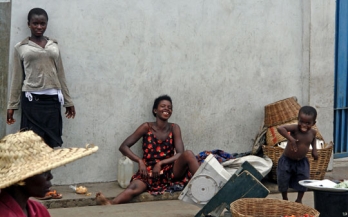The following report provides a consolidation of the findings, their implications for the achievements of the Marketplace program to date, and a series of recommendations to strengthen the design and potential for impact of the Marketplace moving forward.
This study report presents a costing model that was developed to calculate the total national cost as well as to estimate the probable increment in the retail price of fortifying wheat flour and edible oil produced by large flour mills and edible oil refineries with essential micronutrients, and to determine export price of these products.
This summary report presents outcomes from market research interviews conducted with consumers in Nyanza District on behalf of the Marketplace for Nutritious Foods, Rwanda from December 2015 to January 2016.
The research sought to identify strategies to improve the nutritional quality of the diet of infants and young children using locally available and affordable foods. Specifically, it aimed to identify a set of evidence-based, population-specific food-based recommendations that can be promoted to improve infant and young child feeding among farming communities in Ghana’s Central Region.
The research sought to identify strategies to improve the nutritional quality of the diet of infants and young children using locally available and affordable foods. Specifically, it aimed to identify a set of evidence-based, population-specific food-based recommendations that can be promoted to improve infant and child feeding practices among farming communities in Ghana’s Northern Region.
In an effort to explore the potential of new food vehicles for large-scale food fortification in West Africa, GAIN took advantage of two FACT surveys conducted in West Africa that measured quality, coverage and/or consumption of mandatorily fortified foods, for exploring the potential of other industry manufactured foods for fortification.
This report summarizes the findings of the end-line survey to assess the impact of the oil and wheat flour fortification programmes in Côte d’Ivoire conducted in households in three communes in Abidjan and the rural area of Bouaflé in October 2010.
This report presents findings from a series of in vivo and in vitro studies to optimize iron fortification of rice in terms of iron bioavailability and sensory acceptability. It has been suggested, that zinc can negatively influence iron absorption.
This report presents the findings of the Kenya National Micronutrient Survey (KNMS) conducted in 2011 to generate data on the magnitude and distribution of micronutrient malnutrition, including nutritional status and a number of related diseases. The aim of the survey was to establish the prevalence of micronutrient deficiencies, protein-energy malnutrition, and infectious diseases among the Kenyan population.
This research brief provides the key findings from a study commissioned by GAIN'S Postharvest Loss Alliance for Nutrition to conduct a landscape analysis to better understand the dried tomato production and market in Nigeria. Structured questionnaires were used to elicit information on socio-economic characteristics of selectors processors, traders, and consumers.










